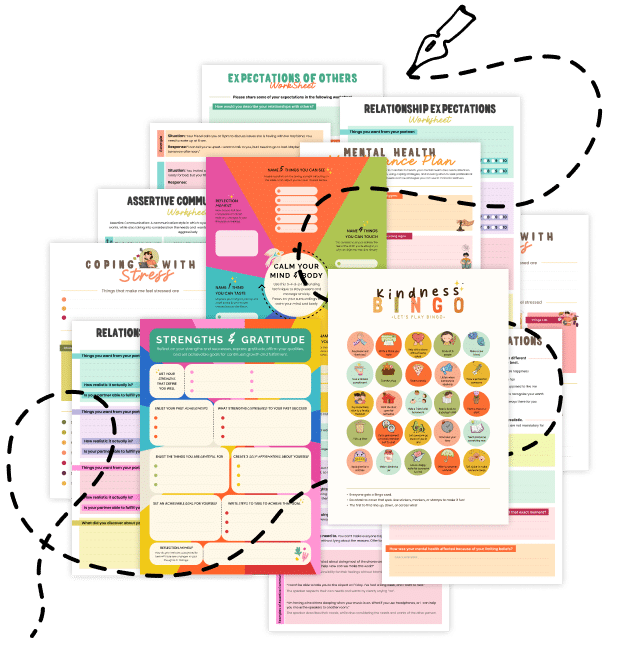20 Things About Conceptual Overlap vs. Divergence
Conceptual Overlap vs. Divergence explores how ideas and mental constructs can share common features while also maintaining distinct differences. In this post, you’ll discover 20 insightful points that explain how our minds recognize similarities and differences, helping boost creativity, effective learning, and innovative problem-solving.
1. What Is Conceptual Overlap vs. Divergence?
This concept examines how different ideas can either share significant commonalities (overlap) or display marked differences (divergence), shaping how we categorize and understand information.
2. Overlap: Finding Common Ground
Conceptual overlap involves identifying shared features or themes between ideas, which can make complex information more accessible and relatable.
3. Divergence: Celebrating Differences
Divergence emphasizes the unique elements that set ideas apart, encouraging fresh perspectives and innovative approaches.
4. Cognitive Categorization
Our brains naturally group similar information together. Recognizing overlap helps with faster recall and more efficient learning.
5. Enhancing Creativity
When you spot overlaps between seemingly unrelated concepts, you can blend ideas in creative ways—fueling innovation and original thinking.
6. The Role in Problem Solving
Understanding both the commonalities and differences between concepts allows you to approach problems with a more nuanced perspective and tailor solutions effectively.
7. Balancing Familiarity and Novelty
A healthy mix of overlap and divergence ensures that you benefit from existing knowledge while remaining open to new, transformative ideas.
8. Overlap in Learning Strategies
When educational content shares common structures or themes, it becomes easier to integrate and apply new knowledge across different subjects.
9. Divergence in Critical Thinking
Acknowledging differences between concepts challenges assumptions and fosters deeper analysis, which is essential for critical thinking.
10. Influencing Decision-Making
Recognizing where options overlap can highlight underlying similarities, while divergence can signal unique benefits or risks, aiding more balanced decisions.
11. Communication Clarity
Using overlapping concepts in communication helps build common understanding, while emphasizing divergence can clarify distinct viewpoints.
12. Encouraging Interdisciplinary Thinking
Exploring overlaps between different fields can spark interdisciplinary innovations, while noting divergences helps tailor specialized expertise.
13. Fostering Adaptive Learning
Being aware of both shared and unique aspects of information helps you adapt your learning strategies to different contexts and challenges.
14. The Power of Analogy
Analogies often rely on conceptual overlap to explain new ideas by comparing them with familiar ones, making complex subjects easier to grasp.
15. Avoiding Cognitive Entrapment
Recognizing divergence prevents your thinking from becoming too rigid, encouraging continuous growth and flexibility.
16. Strategies for Brainstorming
During brainstorming sessions, highlighting both overlapping ideas and divergent perspectives can lead to more robust and creative outcomes.
17. Visualizing Concepts
Tools like mind maps and diagrams help visually display where ideas overlap and where they diverge, aiding clearer understanding and retention.
18. Enhancing Cognitive Flexibility
Regularly analyzing similarities and differences between concepts can strengthen your mental agility, making it easier to switch between different modes of thought.
19. Real-World Applications
From designing innovative products to solving everyday challenges, understanding conceptual overlap vs. divergence plays a crucial role in effective decision-making and strategic planning.
20. Related Topics to Explore
- Abstract vs. Concrete Thinking: Dive into how abstract concepts differ from tangible details.
- Conceptual Chunking: Learn how grouping similar ideas can simplify complex information.
- Cognitive Entrenchment: Understand the risks of overly rigid thinking patterns.
- Lexical Restructuring Hypothesis: Explore how language influences the way we differentiate and relate concepts.
Quick Tips to Boost Conceptual Overlap vs. Divergence
- Create Mind Maps: Visually map out ideas to see where they converge and diverge.
- Engage in Brainstorming Sessions: Invite diverse perspectives to reveal both similarities and differences in thinking.
- Compare and Contrast: Regularly practice listing the commonalities and unique traits of concepts you encounter.
- Challenge Your Assumptions: Reflect on how your own biases might blur the lines between overlap and divergence, and actively seek alternative viewpoints.
By understanding Conceptual Overlap vs. Divergence, you can fine-tune your cognitive processes, enhance creativity, and make smarter decisions. Embrace both the familiar and the unique aspects of ideas to unlock your full mental potential!


